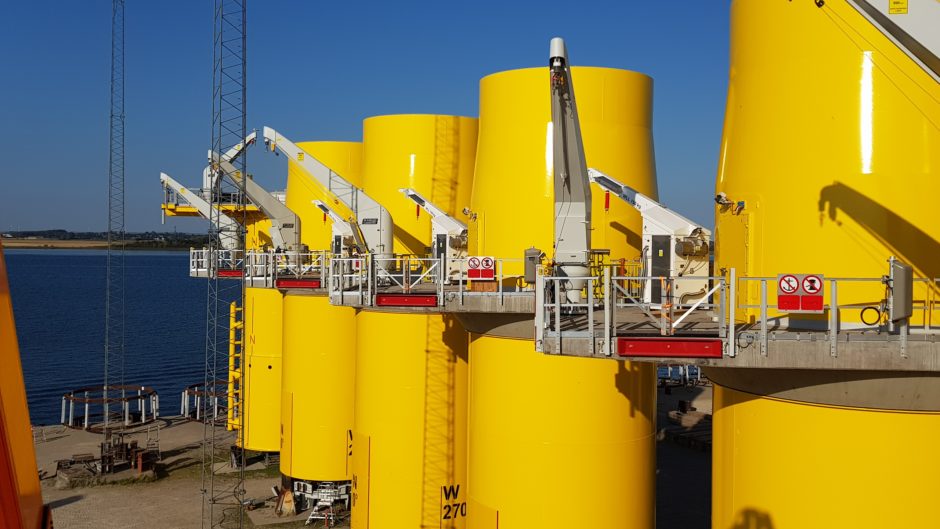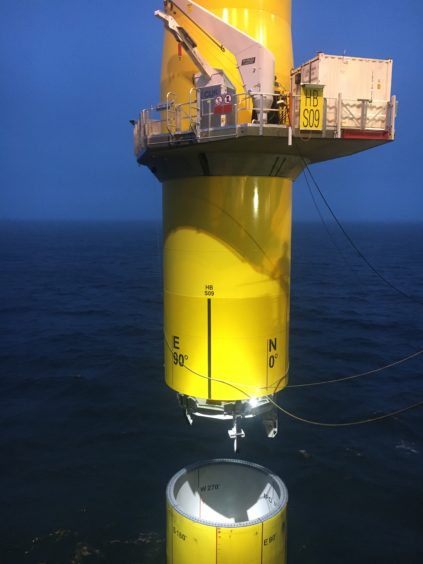
Offshore wind giant Ørsted has signed a multi-million pound deal with a Scottish engineering firm in an effort to increase worker safety at its Hornsea Two development.
Inverkeithing-based Pict Offshore will supply its ‘Get Up Safe’ (GUS) motion-compensated lifting system, allowing technicians to be hoisted off the crew landing vessel and lowered onto the turbine’s platform.
This means workers won’t have to step from the bow of the ship onto a ladder, something that can be difficult and precarious when the sea is rough.
It also eliminates the need for them to climb up onto the platform, an ascent that can be up to 20 metres.
The GUS systems’ “active heave compensation function” monitors the vessel’s motion and automatically adjusts the line position making it easier for technicians to get on to the structure, even in challenging weather conditions.
Hornsea Two, which is located around 55 miles off the Yorkshire coast, will be the first ever offshore wind farm to use the GUS system, meaning it will also be the first to be constructed without boat landing structures and ladders on the turbine’s foundation.
The project is the result of a 3-year collaboration between Ørsted and Pict Offshore, during which time, the Danish firm took a minority stake in the Fife company.
Pict, which has doubled its headcount in the last few month, is now manufacturing the GUS systems at its facility in Inverkeithing.
With a total capacity of 1.4 gigawatts (GW), Hornsea Two will become the world’s largest offshore wind farm on completion in 2022 and will provide power to around 1.3 million UK homes.
Last week, Ørsted confirmed the first turbine for the development had been successfully installed.
Duncan Clark, head of UK Region at Ørsted, said: “Innovation continues to be a key driver behind the success of offshore wind and the UK is leading the way through engineering innovators like Pict Offshore. Hornsea Two is set to be another ground-breaking offshore wind project and showcases how far the industry has come in terms of size, scale, knowledge and ambition.
“At the heart of this ingenious engineering is safety and the GUS system is a pioneering example of how new technology to helping to ensure the wellbeing of our technicians and project teams.”
Phillip Taylor, Pict’s managing director, said: “With this deployment, Ørsted is living up to its reputation as a visionary renewable energy player. The decision to deploy the GUS system at Hornsea Two is a bold and transformative move designed to both increase safety and reduce costs for the next generation of offshore wind farms.
“With other offshore wind developers now taking a strong interest in the system, we hope that it’s a vision that will be shared by the industry”.
Andy McDonald, head of low carbon transition at Scottish Enterprise, said: “It is great to see Pict Offshore reach the next stage of progression to produce hoists for the offshore wind industry and in turn provide a shift change solution for wind operators in terms of delivering safer and cost effective means of transferring personnel.
“The initial development of the Get Up Safe technology was supported by Scottish Enterprise and it is fantastic to learn this will be deployed on what will become the largest windfarm in the world at Hornsea Two and in turn highlight Scottish innovation on an international scale.”
Recommended for you


